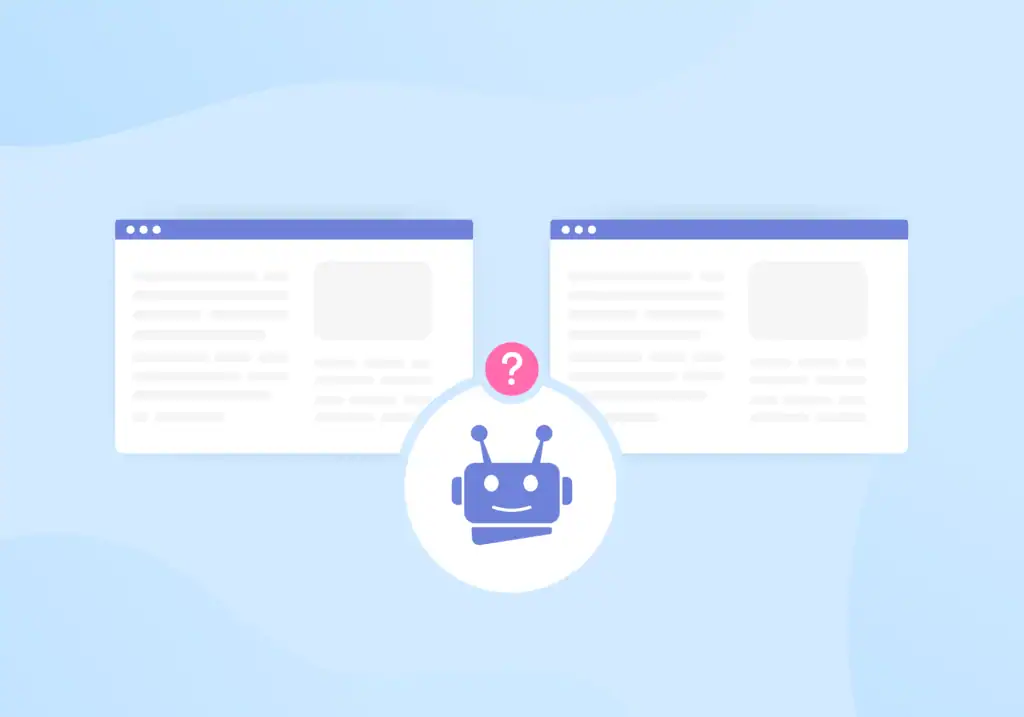Programmatic SEO can help you scale thousands of pages efficiently — but it also increases the risk of duplicate or near-duplicate content. Search engines like Google reward unique, valuable pages and penalize sites that produce thin, repetitive content. If left unchecked, duplication can erode your site’s visibility and authority.
This guide breaks down how to detect, prevent, and fix duplicate content issues in programmatic SEO, with proven strategies that maintain scale and quality.
1. Understand What Counts as Duplicate Content
Duplicate content doesn’t always mean plagiarism — it’s any content that appears substantially similar across multiple URLs. This can include:
-
Exact duplicates: Pages with identical titles, descriptions, and body text.
-
Near duplicates: Pages generated from similar templates with only small variable changes (e.g., “Best hotels in Paris” vs. “Best hotels in London”).
-
Cross-domain duplicates: Content replicated across different domains or subdomains.
In programmatic SEO, duplication often arises from mass-produced templates where keyword variables don’t create meaningful differences for users.
2. Why Duplicate Content Hurts Programmatic SEO

When search engines encounter similar pages, they struggle to determine which one to index or rank. The consequences include:
-
Diluted ranking signals (links, engagement, authority split across URLs)
-
Crawl budget waste on repetitive pages
-
Lower trust and quality perception (especially under Google’s Helpful Content and EEAT guidelines)
-
Potential indexation exclusion for entire URL groups
In short, duplicate content doesn’t just affect a few pages — it can cripple your site’s entire programmatic SEO architecture.
3. Common Causes in Programmatic SEO
| Source of Duplication | Description | Example |
|---|---|---|
| Template reuse | Identical page structures with little variation | “Best Restaurants in [City]” using same intro paragraph |
| Parameterized URLs | Multiple query strings for the same content | ?sort=asc, ?ref=google |
| CMS pagination | Duplicate title/meta across listing pages | /page/1, /page/2 |
| Syndicated or scraped data | Reused product or API descriptions | Marketplace data feeds |
| Thin variable swaps | Keyword token changes only | “Buy Cheap Laptops” vs “Purchase Affordable Laptops” |
4. How To Prevent Duplicate Content at Scale
A. Use Dynamic Template Variation
Instead of reusing static intros or boilerplate text, use multiple template versions or modular snippets:
-
Rotate phrasing, sentence structure, and examples.
-
Inject unique data (statistics, reviews, local facts, or trends).
-
Add location- or topic-specific FAQs.
Tip: Use AI or LLM-based content generation to inject meaningful semantic variation — but always add human review.
B. Leverage Canonical Tags
For pages that must exist with similar content (e.g., filters or tracking parameters), specify a canonical URL:
This signals to Google which version should be indexed and ranked.
C. Manage URL Parameters
Use Google Search Console’s parameter settings or server-side URL normalization to prevent multiple versions of the same page from being crawled:
-
Strip session IDs, tracking codes, and unnecessary parameters.
-
Consolidate sorting/filter options with clean URLs.
D. Consolidate or Merge Thin Pages
If multiple programmatic pages serve nearly identical user intent, merge them into a single, more authoritative resource.
Example:
-
Combine “Hotels near Central Park” and “Hotels near Manhattan Park” into one well-structured guide.
E. Generate Unique Metadata and Schema
Each page should have distinct:
-
Title and meta description
-
Heading structure (H1–H3)
-
Schema attributes (e.g.,
location,product,reviewRating)
Automate these using your programmatic SEO framework to dynamically pull from unique data sources or variables.
F. Use Internal Linking Intelligently
Link related pages hierarchically (e.g., /hotels/ → /hotels/new-york/ → /hotels/central-park/) to signal content relationships.
Avoid orphan pages and circular link loops — both confuse crawlers and users.
5. Tools to Detect and Audit Duplicate Content
-
Screaming Frog SEO Spider: Detects duplicate titles, meta, and content hashes.
-
Sitebulb or JetOctopus: Visual crawl analysis for thin or similar pages.
-
Copyscape / Siteliner: Checks for cross-domain or on-site duplication.
-
Google Search Console: “Duplicate without user-selected canonical” warnings.
-
Ahrefs / SEMrush Site Audit: Identifies duplicated meta or low-content-uniqueness clusters.
6. Bonus: Algorithm-Safe Content Scaling Framework
| Stage | Action | Tool/Technique |
|---|---|---|
| Data collection | Gather unique data (APIs, user reviews, local stats) | Python / Airtable / Google Sheets |
| Content templating | Build multi-variant text modules | GPT-based templates or n8n flows |
| Content uniqueness check | Test semantic distance before publishing | NLP cosine similarity (<0.8 threshold) |
| Auto-canonicalization | Add canonical + hreflang logic | Dynamic meta generator |
| Quality audit | Crawl weekly to flag duplicates | Screaming Frog automation |
7. Key Takeaways
-
Uniqueness beats quantity. A smaller set of high-quality pages outperforms thousands of duplicates.
-
Data diversity = content diversity. The more exclusive your dataset or angle, the safer you are from duplication.
-
Automate checks, not quality. Automation identifies issues — human oversight ensures real value.
By implementing structured data pipelines, dynamic template systems, and canonical discipline, you can scale your programmatic SEO projects confidently — without falling into the duplicate content trap.
Originally posted 2025-02-02 04:29:24.

